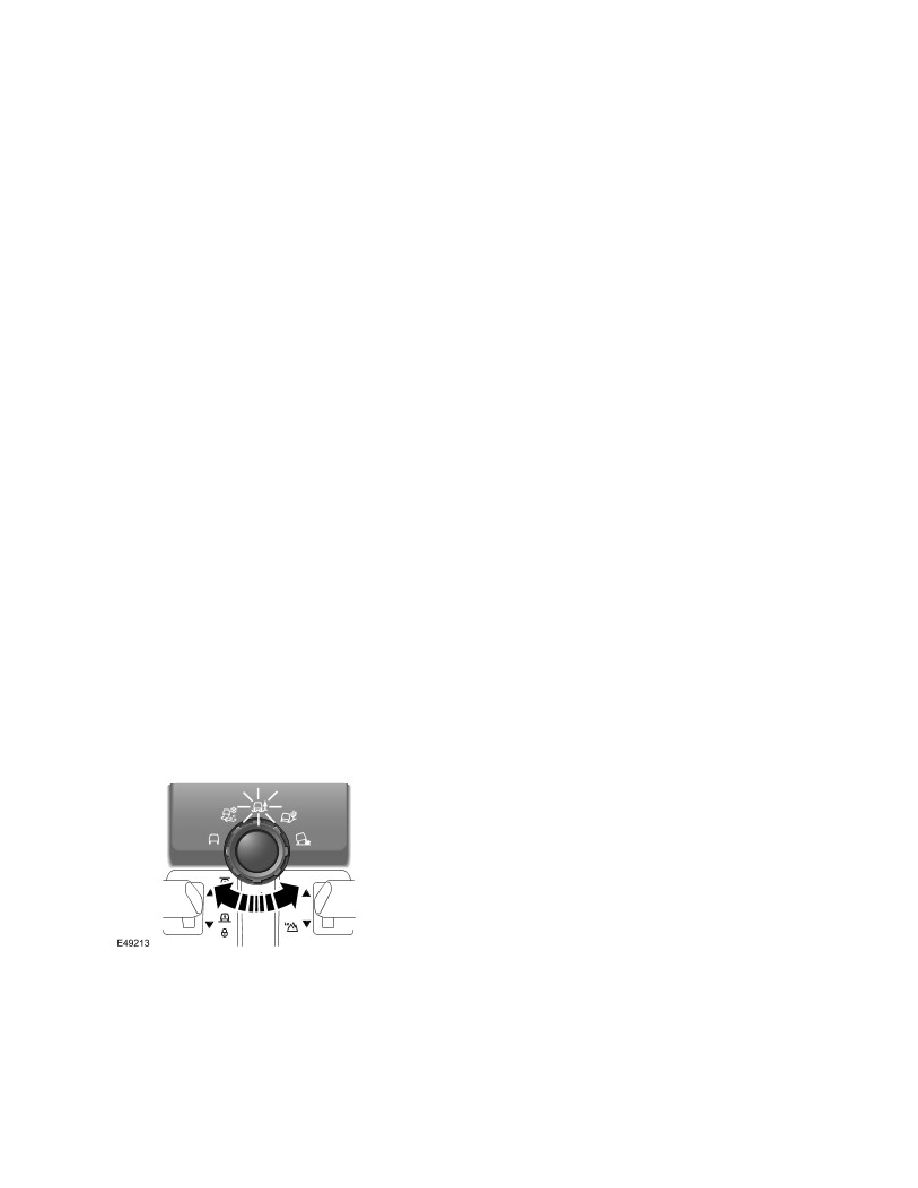LR3/Disco 3

The selection of high/low range is achieved by using a switch located behind the main transmission selection lever in the
centre console. A range change can only be performed when the transmission selector lever is in neutral (position 'N' for
vehicles with automatic transmission). The accelerator pedal must not be depressed when a range change is in progress.
If high or low range is requested and the transmission selector lever is in a position other than neutral, or 'N' or 'P', on
vehicle with automatic transmission, the instrument cluster message centre, if fitted, will display 'SELECT NEUTRAL'.
NOTE :
When low range is selected, the low range 'mountain' symbol will flash when the range change is taking place and then
remain illuminated when the range change is complete. The instrument cluster message centre, if fitted, will display 'LOW
RANGE' for approximately 3 seconds followed by a chime from the instrument cluster to confirm that the range change
has been completed. On vehicles with automatic transmission, only 'D' and 'Manual mode' are available, the 'Sport mode'
selection is not available.
When high range is selected, the low range 'mountain' symbol will flash when the range change is taking place and then
extinguish when the range change is complete. The instrument cluster message centre, if fitted, will display 'HIGH
RANGE' for approximately 3 seconds followed by a chime from the instrument cluster to confirm that the range change
has been completed.
The design of the transfer box allows range changes when the vehicle is moving, within set limitations as follows:
High to Low – at speeds not exceeding 25 mph (40 km/h) for vehicles with automatic transmission, and 12 mph
(20 km/h) for vehicles with manual transmission
Low to High – at speeds not exceeding 37 mph (60 km/h).
If the vehicle speed is higher than the parameters given, the instrument cluster message centre, if fitted, will display
'SLOW DOWN'. When the correct speed range is reached, the message will be deleted and the range change will
commence.
The transfer box control module interprets a road speed of less than 2 mph (3 km/h) as a static shift (vehicle not moving).
In this instance, on vehicles with automatic transmission, the driver must use the shift lock procedure of operating the
brake pedal to allow the selector lever to be moved from 'N' to 'D' after the range change has been performed.
High range should be used for all normal road driving and also for off-road driving across dry, level terrain. Low range
should only be required where low speed manoeuvring is necessary, such as reversing a trailer, negotiating steep
slippery surfaces or boulder-strewn terrain. Low range should also be used for extreme off-road conditions where
progress in high range cannot be maintained. Low range should never be used for normal road driving.
Terrain Response™
The Terrain Response™ system allows the driver to select a program, which will provide the optimum settings for traction
and performance for the prevailing terrain conditions.
The system is controlled by a rotary control located on the centre console. The rotary control allows the selection of one of
the following five programs:
Special programs off (general driving conditions)
Grass/Gravel/Snow
On vehicles with automatic transmission, if the transmission selector lever is in the 'P' position, the range change
will not take place and the 'SELECT NEUTRAL' message will not be displayed in the message centre.
